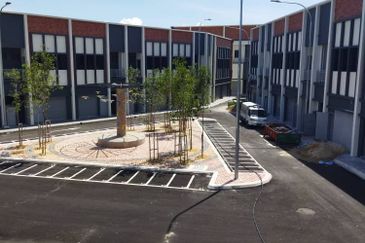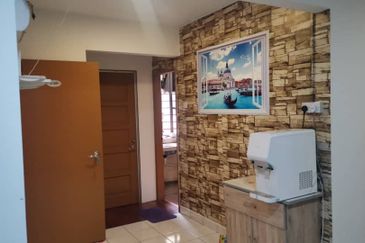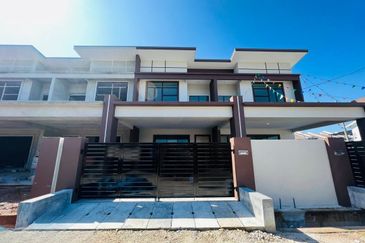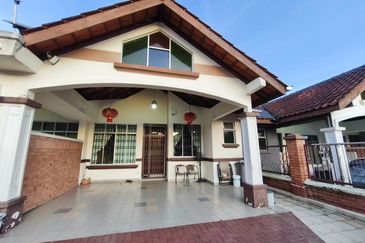
API, among the many names of Sabah’s capital city, Kota Kinabalu, was perhaps the most prescient one when the coastal town served as one of the important trading posts of the British crown.
In September 1945, caught between the devastating clasp of the Japanese army and being a British protectorate, the town — then known as Jesselton — burnt to the ground after Allied Forces bombed it to decimate the Japanese. Only three buildings were left standing.
But like the proverbial phoenix, the town rose from the ashes, fairly quickly at that, underlining its legacy of being an important economic centre in Borneo. Boasting alabaster sands, aquamarine waters and wetland reserves in the middle of a thriving and bustling city, Kota Kinabalu is quite the dream come true for millennials looking to place a firm footing on a piece of heaven without losing out in the rat race.
Knight Frank Malaysia (Sabah) research executive Welton Chin says the majority of property buyers in Kota Kinabalu in the past two years have been local first-time homebuyers and young families. “According to the Department of Statistics, the population pyramid in Sabah has shown a consistent increase in the 15 to 29 age group, making up 47% of the total population,” he says in an email reply to The Edge.
“In demographic studies, this spurt is commonly known as the ‘youth bulge’, which is a productive age group needed for Sabah’s growing economy in the manufacturing and services sectors.”
There is a growing expatriate population, mainly from South Korea, China, Japan, Australia and the UK, who have relocated there for employment or retirement. “Like many coastal cities, Kota Kinabalu boasts beautiful scenery and metropolitan commerce. A property in Sabah is still comparatively less expensive, geographically close and one of the few destinations where foreigners can freely purchase a property in their own name and obtain bank financing,” says Chin.
“And with more foreign developers entering the market, Sabah’s property industry is gaining exposure internationally.”

The tourism, palm oil and oil and gas industries have helped spur Kota Kinabalu’s property market. Sabah was the second most visited state in Malaysia after Selangor in 2011, owing much to its pristine coastlines and islands, such as Pulau Gaya and Pulau Manukan off Kota Kinabalu, as well as Mount Kinabalu.
Kota Kinabalu International Airport is the second busiest airport in the nation, with 5.2 million passengers annually, according to the Malaysian Administrative Modernisation and Management Planning Unit’s website, mycorridor.com.my. According to the Sabah Tourism website, 3.18 million tourists arrived on its shores last year, a slight drop of 1.7% from 3.23 million tourists in 2014.
Sabah seems to be in the midst of burgeoning development. Sabah Housing and Real Estate Developers’ Association president Datuk Francis Goh reportedly said in November 2014 that property development was the third highest contributor to Sabah’s economy with RM7.56 billion, after oil and gas (RM10 billion) and palm oil (RM15.3 billion).
He also said development projects worth more than RM20 billion were expected to begin in 2015, as Sabah looked to attract manufacturing investments, particularly in the petrochemical and energy sectors (of up to RM5 billion) by end-2015. This was based on Kota Kinabalu and the Sabah Development Corridor (SDC) being identified as one of the five regional cities and corridors that will propel the nation’s economy under the Economic Transformation Programme.
Chin says the projects that have commenced under the SDC include the Sabah Oil and Gas Terminal (SOGT), Sabah-Sarawak Gas Pipeline (SSGP) and the Kimanis 300mw power plant. Another promising project is the the Sapangar Bay Manufacturing and Logistics Cluster (SMLC) — an economic area specifically designed to enhance the integration of the manufacturing and logistics industries to augment Sabah’s competitiveness by harnessing the state’s geographical advantages.
“It is located within the cluster of the Kota Kinabalu Industrial Park (KKIP), the largest industrial park in Sabah. A free zone is being considered at KKIP. The SMLC also houses the Sapangar Bay Container Port (SBCP) — the state’s main container port — which is only 6km from KKIP.”
All these developments and policies have seen more investors, property developers and industrialists set up shop in Kota Kinabalu. Property prices in the city centre have shot up as land prices continue to rise, owing to a shortage of available land, a weaker ringgit and higher labour costs due to a mandated increase in the minimum wage.
An analysis conducted by TheEdgeProperty.com showed that the average transacted price in Kota Kinabalu hit RM340 per sq ft (psf) in the first quarter of 2015 — a 12.7% increase from RM302 psf in the first quarter of 2014. Domestic demand for well-priced properties is being driven by population growth. Kota Kinabalu’s population is expected to reach almost one million by 2020.
Chin says that so far, the take-up rate of new schemes launched this year have been strong, underlined by projects such as Kingfisher Inanam by Hap Seng Properties Development Sdn Bhd and Bukit Bantayan by Gamuda Land. Other projects expected to boost Kota Kinabalu’s profile include the RM1.8 billion Jesselton Quay waterfront development by SBC Corp Bhd and the RM1.4 billion KK Convention City by Mah Sing Group Bhd. Meanwhile, S P Setia Bhd has RM1.8 billion worth of projects planned at Aeropod in Tanjung Aru.

Kota Kinabalu’s retail space is a lucrative sub-sector within the property market. The city’s retail market is currently No 3 in Malaysia after the Klang Valley and Penang, with 17 malls offering a total net lettable area of 4.59 million sq ft, Mayor Datuk Abidin Madingkir said in January.
Chin says the retail space is expected to increase by more than one million square feet between now and the first quarter of 2017, with the slated completion of projects such as Pacific Parade Bazaar @ PacifiCity and Jesselton Mall.
Grappling with challenges
However, the city is grappling with challenges, says Tawau Municipal Council president Alijus Sipil, who has served on Kota Kinabalu City Hall’s town planning unit for 16 years. “There has been rapid development, especially within a 10-mile radius of Kota Kinabalu city centre. Due to a lack of land, the city centre cannot expand so we had to distribute the new developments to other areas and the problem with that is the provision of infrastructure.”
He says the new roads are unable to cope with the demands of the newly developed areas while existing roads are straddled with highly built up areas, making road expansion a costly move. “The development rate is not parallel to infrastructure development.”
The reasons for the inadequate provision of infrastructure are familiar to many of the municipal councils in Malaysia. The local councils’ lack of autonomy, owing to a bureaucratic structure based on a political system that is heavily concentrated at the federal level, has led to a general weakness in infrastructure planning. A case in point is the local council’s inability to gazette public transport corridors for future public transport projects.
Alijus says the development of roads is mainly the jurisdiction of the Public Works Department (JKR). “The plans are done by [Kota Kinabalu] City Hall. But city hall is under the Chief Minister’s Department so actually, the role of the Chief Minister’s Department is to help City Hall communicate with other agencies, especially JKR, to make sure the road infrastructure meets the demands of the developments.”
Penampang MP Darell Leiking says that while the district he represents has enjoyed the spillover effects of a booming Kota Kinabalu property market, the planning of the property development leaves much to be desired. “Whenever there was a proposal to develop housing, they just approved it without thinking about the spinoff development, such as bicycle lanes. Some of the developments require parks, open spaces. But when you go to the ground, there are no such provisions.”
This lack of planning has led to a lack of a comprehensive public transport system in Kota Kinabalu. Currently, the city depends on buses, says Leiking. As Kota Kinabalu and Sabah are at the brink of rapid development, a sound public transport system will not only ease business and trade but also enliven the city to attract more tourists and cut down on greenhouse emissions, he adds.
The government has made an effort to address planning deficiencies, as the Sabah Town and Regional Planning Department has come out with a draft of the Sabah Structure Plan 2033. Under the plan, which also highlights sustainable development, the state government aims to improve public transport in Kota Kinabalu by introducing the light rail transit and bus rapid transit (BRT) system. Under Budget 2016, RM1 billion will be allocated towards the implementation of the city’s BRT system.

Old versus new
Kota Kinabalu’s rapid development is weighing down on the preservation of heritage buildings and the natural environment. Social activist Jefferi Chang says the city’s rise as a property haven has caused tensions between the needs of the public and the desires of developers.
“The public actually wants heritage buildings to be protected. But the problem with that is rapid development is putting pressure on the preservation of our cultural heritage and the environment,” he points out.
Chang, born and bred in Kota Kinabalu, was among the vociferous and unyielding voices calling for the preservation of Atkinson Clock Tower when a proposed 16-storey commercial development project threatened to be within 10 metres of the historical structure. He also challenged the proposed development in court and after intense pressure from the public, the project was scrapped. The tower, completed in 1905, is the only remaining pre-war structure in the state capital and is an important heritage site.
Chang says Kota Kinabalu has lost the lustre of its pristine environment due the heavy development over the past few years. “I am not saying I am anti-development, but the rapid development I see is not sustainable and not for the benefit of the people.”
However, it should be noted that the state has taken steps to preserve some of Kota Kinabalu’s treasures. The government announced last month that it would declare the 24ha mangrove forest in the heart of the city centre as the country’s seventh Ramsar Site. A Ramsar Site is a wetland site deemed of international importance under the Ramsar Convention, an intergovernmental environmental treaty established in 1971 by Unesco.
Town planners are drawing up a new plan for Kota Kinabalu, with an emphasis on sustainable development. Heritage Sabah vice-president Chua Chun Kiong says Kota Kinabalu City Hall aims to maintain and preserve the city’s heritage buildings, but it lacks the funding and restoration know-how.
“The city council was very cooperative when we suggested including heritage preservation in the Draft Kota Kinabalu Local Plan 2020. But its town planners don’t know how heritage preservation is done and how to achieve sustainability,” he points out, adding that deliberations on the draft plan started six years ago, but progress has been slow due to the controversies over public spaces such as the Atkinson Clock Tower area and Tanjung Aru.
Chang agrees, saying that the Draft Kota Kinabalu Local Plan 2020 has good policies on preserving heritage buildings and the environment. “But it remains to be seen whether the plan is adopted and implemented,” he says, adding that the government is not doing enough to preserve the natural beauty of Kota Kinabalu and sacrificing too much for corporate profit.
This article first appeared in the Special Report Rejuvenating Cities Together, of The Edge Malaysia Weekly, on March 28, 2016. Subscribe here for your personal copy.
TOP PICKS BY EDGEPROP
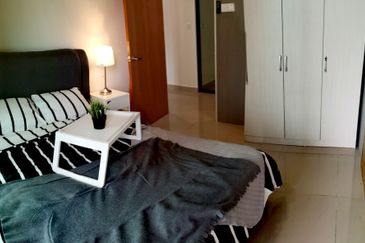
Citizen 2
Jalan Klang Lama (Old Klang Road), Kuala Lumpur
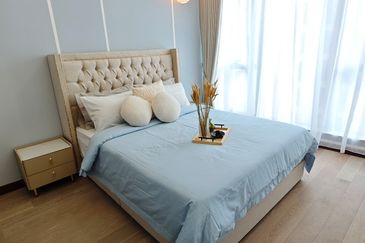
Core Residence @ TRX
Bandar Tun Razak, Kuala Lumpur

CROWN IMPERIAL COURT APARTMENT
Cameron Highlands, Pahang

Midori Green @ Austin Heights
Johor Bahru, Johor




